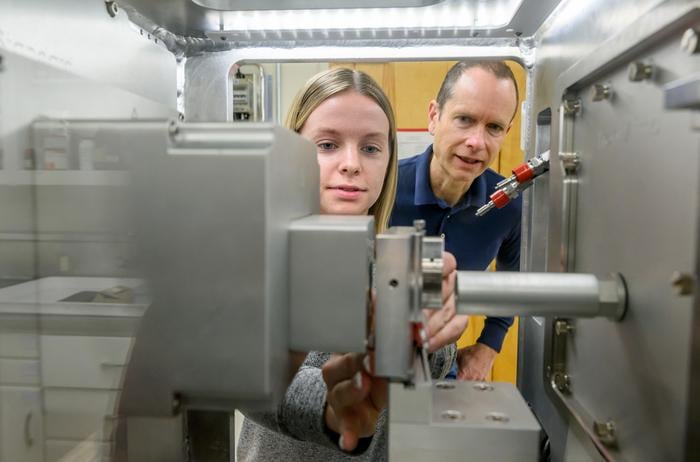A squishy, layered material that dramatically transforms when compressed could hold the key to creating more energy-efficient computer memory. Researchers at Washington State University have discovered that a unique semiconductor undergoes remarkable structural changes under pressure, potentially paving the way for faster, longer-lasting data storage.
The study, published in AIP Advances, reveals that a hybrid material made of zinc telluride and an organic molecule called ethylenediamine experiences significant structural transformations at relatively low pressures – changes that could make it ideal for next-generation data technologies.
“Being able to do these high-pressure experiments on campus gave us the flexibility to really dig into what was happening,” said Matt McCluskey, a professor of physics at WSU and co-author on the study. “We discovered that the material didn’t just compress—it actually changed its internal structure in a big way.”
The material, technically called β-ZnTe(en)₀.₅, has a distinctive sandwich-like structure with alternating layers of zinc telluride and ethylenediamine. When researchers applied pressure using diamond anvils and observed the results with a specialized X-ray system, they witnessed something surprising: the material underwent two different phase transitions at unusually low pressures (2.1 and 3.3 gigapascals).
During these transitions, the material’s structure dramatically rearranged, with the thickness in one direction shrinking by up to 8%. Such transformations are significant because they could potentially be used to encode digital information in phase-change memory – a type of data storage that’s faster and more durable than conventional memory while requiring less power.
“Most materials like this need huge amounts of pressure to change structure, but this one started transforming at a tenth of the pressure we usually see in pure zinc telluride,” said Julie Miller, a physics PhD student at WSU and the study’s lead author. “That’s what makes this material so interesting—it’s showing big effects at much lower pressures.”
Phase-change memory works by switching materials between different structural states that have distinct electrical properties. While today’s computers primarily use memory that requires constant power to maintain data, phase-change memory can retain information even when powered off, potentially saving significant energy in future computing devices.
Another promising aspect of the material is its directional sensitivity – it responds differently depending on which way it’s squeezed. This property, combined with the fact that it emits ultraviolet light that might change with its phase, opens possibilities for applications in fiber optics and optical computing as well.
The discoveries were made possible by a million-dollar X-ray diffraction system acquired in 2022 with support from the Murdock Charitable Trust. This equipment allowed the team to observe the material’s structural changes in real time without traveling to major national research facilities.
“We’re just beginning to understand what these hybrid materials can do,” Miller added. “The fact that we could observe these changes with equipment right here on campus makes it that much more exciting.”
While commercial applications are still years away, the research team is already planning their next steps – studying how the material responds to temperature changes and exploring what happens when both pressure and heat are applied simultaneously.
If our reporting has informed or inspired you, please consider making a donation. Every contribution, no matter the size, empowers us to continue delivering accurate, engaging, and trustworthy science and medical news. Independent journalism requires time, effort, and resources—your support ensures we can keep uncovering the stories that matter most to you.
Join us in making knowledge accessible and impactful. Thank you for standing with us!

